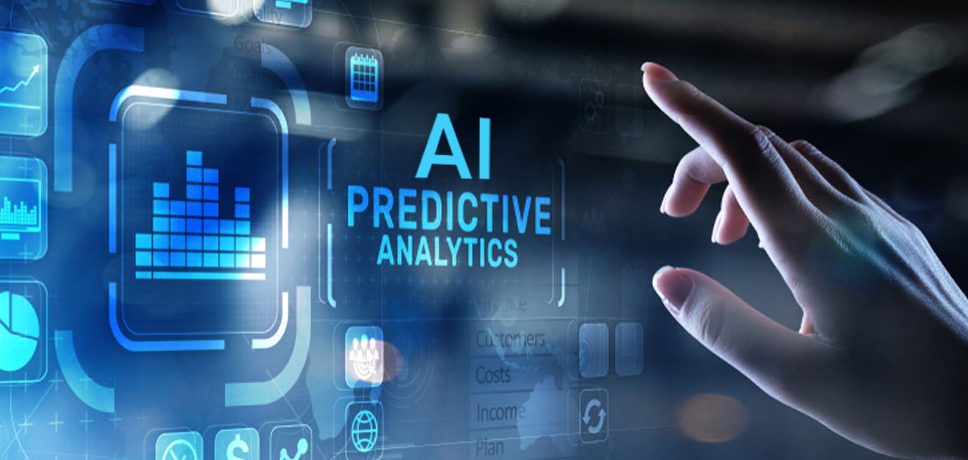Businesses are depending more and more on predictive analytics in today’s data-driven environment to foresee trends, make wise decisions, and obtain a competitive edge. The power of predictive analytics has been greatly enhanced by the development of artificial intelligence (AI), which has completely changed how businesses approach data analysis and decision-making. This blog examines the significant effects AI is having on a variety of business industries and how it is improving predictive analytics.

1. Improved Accuracy and Precision
Artificial intelligence (AI) algorithms, in particular machine learning (ML) models, are highly proficient at accurately interpreting large volumes of data. Large, complicated datasets are a common challenge for traditional predictive analytics techniques, but artificial intelligence (AI) can swiftly spot patterns and connections that aren’t always obvious. AI models improve their projections over time by continuously learning from fresh data, producing more accurate and trustworthy forecasts. For companies that depend on data-driven choices to reduce risks and seize opportunities, this increased precision is essential.
2. Real-Time Data Processing
The real-time data processing capability of AI is one of its main advantages in predictive analytics. Companies may now respond almost instantly to new trends and events by analyzing streaming data as it is generated. In the banking industry, for instance, AI-powered predictive analytics may optimize investment strategies and maximize profits by monitoring market circumstances and executing trades in milliseconds. Similar to this, real-time data processing in retail makes it possible for businesses to manage inventory and set prices dynamically, keeping them flexible and adaptable to changing market conditions.
3. Enhanced Customer Insights
Any company trying to improve its goods and services has to understand its customers. Predictive analytics powered by AI offers more in-depth understanding of consumer sentiment, purchase trends, and preferences. Artificial Intelligence (AI) can generate extensive client profiles and forecast future behavior by examining data from multiple sources, including social media, transaction records, and website interactions. This enables companies to customize consumer experiences, target their marketing campaigns, and eventually increase engagement and loyalty.
4. Optimized Operations and Efficiency
Because AI can forecast future events, organizations may increase productivity and optimize their operations. For example, AI-powered predictive analytics in supply chain management may accurately forecast demand, enabling businesses to properly control inventory levels and lower expenses related to overstocking or stockouts. Artificial intelligence (AI)-powered predictive maintenance in the manufacturing sector can anticipate equipment faults before they happen, reducing downtime and increasing machinery longevity. Increased productivity and significant cost reductions are the results of these operational optimizations.
5. Risk Management and Fraud Detection
Another crucial area where AI-enhanced predictive analytics excels is risk management. For instance, financial firms employ AI to evaluate loan risks, forecast credit defaults, and spot fraud. Artificial Intelligence has the capability to detect questionable transactions instantly, averting financial losses and safeguarding clients by examining past data and seeing trends suggestive of fraud. Similar to this, AI models are used in the insurance sector to forecast claim possibilities and aid in more accurate policy underwriting, which helps to balance risk and profitability.
6. Innovation and Competitive Advantage
AI-driven predictive analytics fosters innovation by uncovering new opportunities and market trends. Businesses can leverage AI to identify emerging consumer needs, develop new products, and enter untapped markets. For instance, AI can analyze consumer feedback and market data to predict the success of new product launches, allowing companies to refine their strategies and reduce the risk of failure. By staying ahead of the curve, businesses gain a competitive advantage and position themselves as industry leaders.
Conclusion
Predictive analytics with AI integration is transforming how businesses run by offering never-before-seen accuracy, real-time insights, and operational efficiencies. Businesses may remain ahead of the competition, streamline their operations, and make better decisions by utilizing AI’s capabilities. Predictive analytics will be increasingly impacted by AI technology as it develops, opening up new avenues and changing the face of business. Predictive analytics with AI is not only an improvement but also a must for companies looking to prosper in the current data-driven economy.
